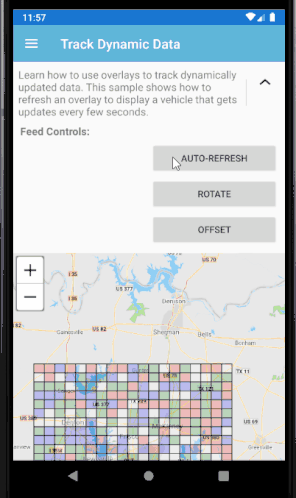Hello ThinkGeo team
I have a Xamarin Forms app where we track a moving feature and need to show to the user if our data is stale.
Lets use a simple example.
We are tracking a delivery van on the map. Updates are coming to the app via Signalr so updates can be very frequent.
When the truck stops moving on the map is it because they have stopped moving or we have ceased getting updates and we are looking at stale data on the map.
Currently on our google maps implementation we have a timestamp on the feature and if it is older than 15 minutes we change the opacity of the feature. Stale data appears “grayed” out. This works well.
I am now looking for the equivalent feature in ThinkGeo.
I have two questions I am asking.
Question 1:
To have the two different styles that are based on a timestamp I am going to use Custom Styles and based on your sample I think this is the correct way to go?
Question 2:
When is the style evaluated and changes applied on the map?
In my example that within a 15 minute window the feature could be considered stale as we have not received an update. I believe I need to trigger a refresh of the Overlay/Layer that contains the Custom Style to have the timestamp evaluated and correct style applied?
I assume a simple 15 minute timer that triggers the refresh would work fine?
I hope those two questions and my example make sense.
Regards
Chris …

